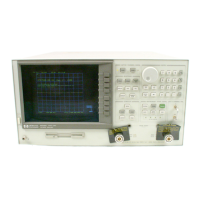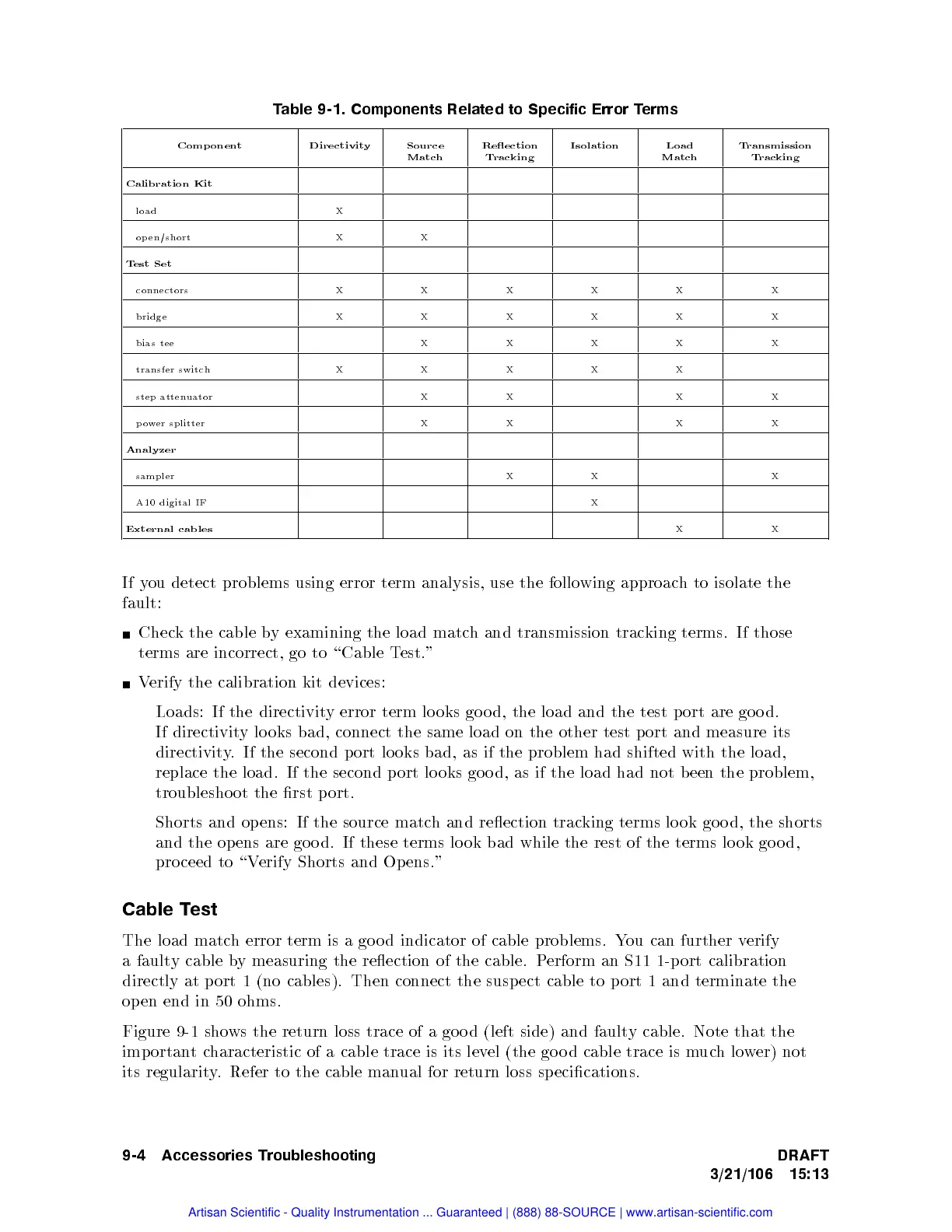Table
9-1. Components
Related to
Specific Error
Terms
Comp
onen
t
Directivit
y
Source
Match
Reection
Trac
king
Isolation Load
Match
T
ransmission
Trac
king
Calibration
Kit
load X
open/short X X
T
est
Set
connectors X X X X X X
bridge X X X X X X
bias
tee
X X X X X
transfer
switc
h
X X X X X
step
atten
uator
X X X X
p
o
w
er
splitter
X X X X
Analyzer
sampler X X X
A10 digital
IF
X
External
cables
X X
If
y
ou
detect problems
using
error
term
analysis,
use
the
follo
wing
approac
h
to
isolate
the
fault:
Chec
k
the
cable
b
y
examining
the
load
matc
h
and
transmission
trac
king
terms.
If
those
terms
are incorrect,
go
to
\Cable
T
est."
V
erify
the
calibration
kit
devices:
Loads:
If
the
directivit
y
error
term
lo
oks
go
o
d,
the
load and
the test
port
are go
o
d.
If
directivity
lo
oks
bad,
connect
the
same
load
on
the
other
test
p
ort
and
measure
its
directivit
y
.
If
the second
port
lo oks
bad,
as
if
the
problem
had
shifted
with
the
load,
replace
the
load.
If
the
second
p
ort
lo
oks
go
od,
as if
the load
had not
b
een
the
problem,
troublesho
ot
the
rst
p
ort.
Shorts and
opens:
If the
source matc
hand
reection trac
king
terms
lo
ok
go
o
d,
the
shorts
and
the
op
ens
are
go o
d.
If
these
terms
lo
ok
bad
while
the
rest
of the
terms
lo
ok
go
o
d,
pro ceed to \V
erify Shorts and Opens."
Cable T
est
The load matc
h error term is a go o d
indicator of cable problems. Y
ou can further v
erify
a
faulty cable b
y measuring the reection of the cable. P
erform an S11 1-p ort calibration
directly at port 1 (no cables). Then connect the susp ect cable to port
1 and terminate the
open end in 50 ohms.
Figure 9-1 shows the return loss trace of a go o d (left side) and faulty cable. Note that the
imp ortant characteristic of a cable trace is its level (the go od cable trace is muchlower) not
its regularity. Refer to the cable manual for return loss sp ecications.
9-4 Accessories Troubleshooting DRAFT
3/21/106 15:13
Artisan Scientific - Quality Instrumentation ... Guaranteed | (888) 88-SOURCE | www.artisan-scientific.com

